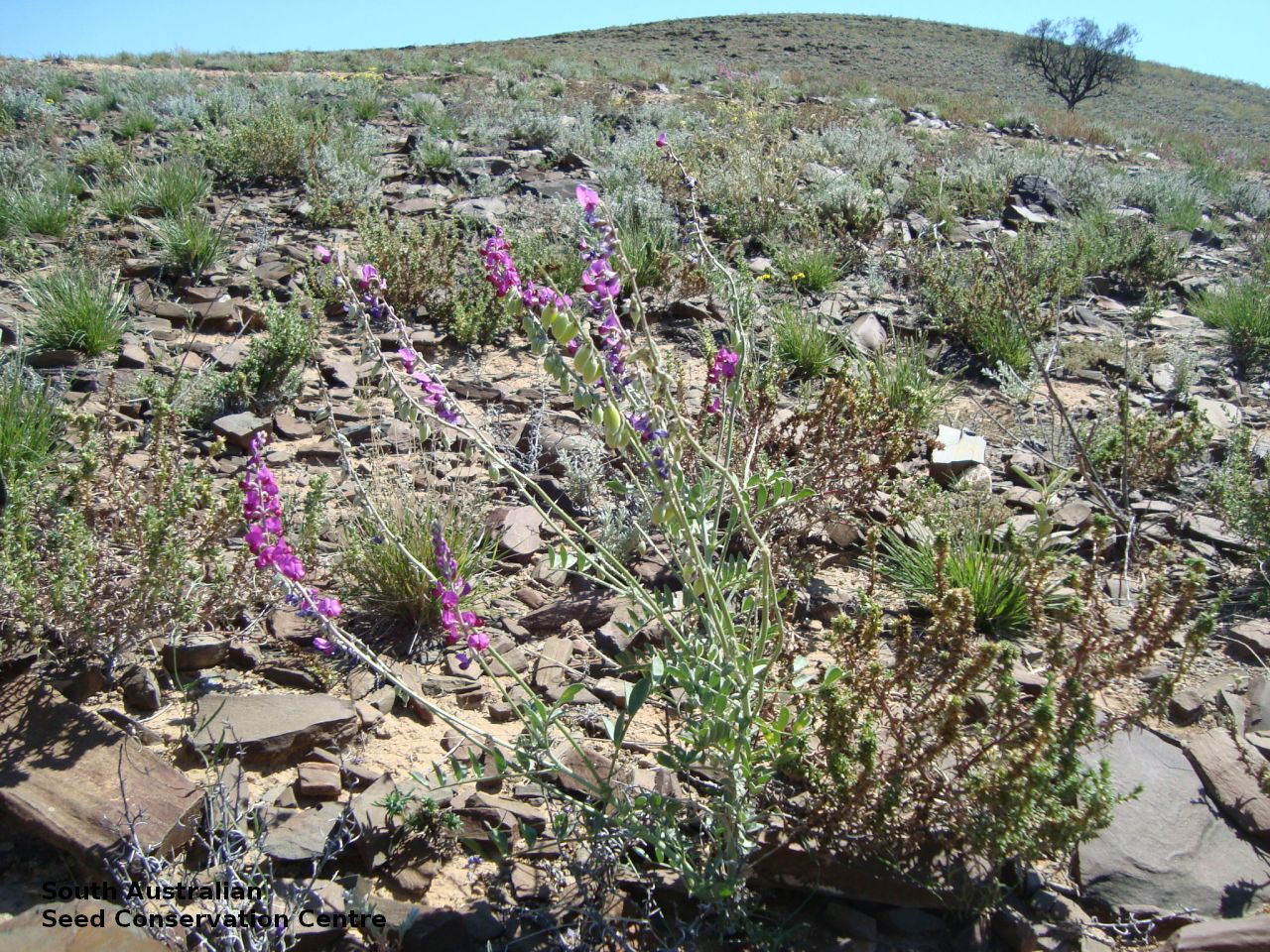
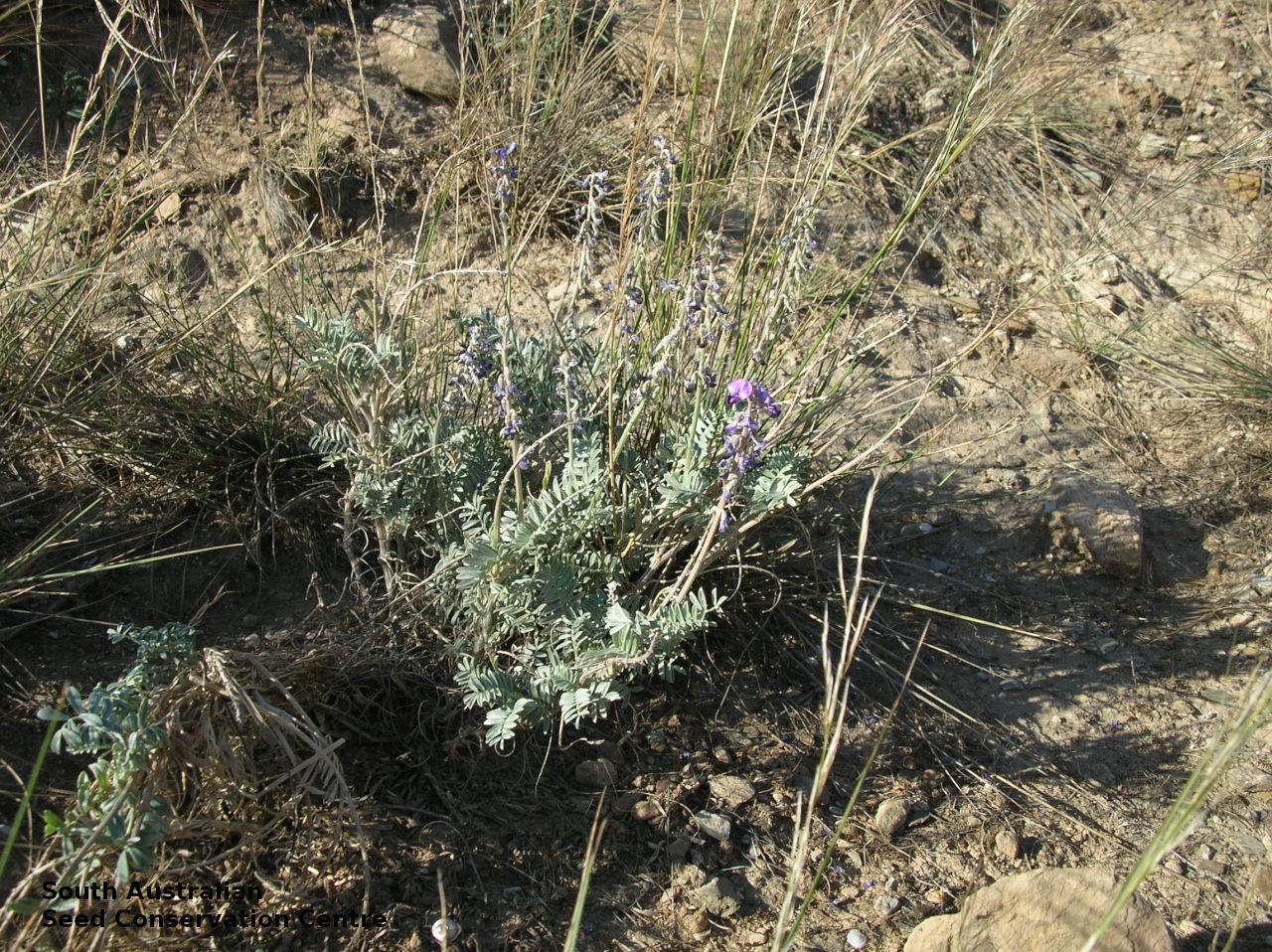
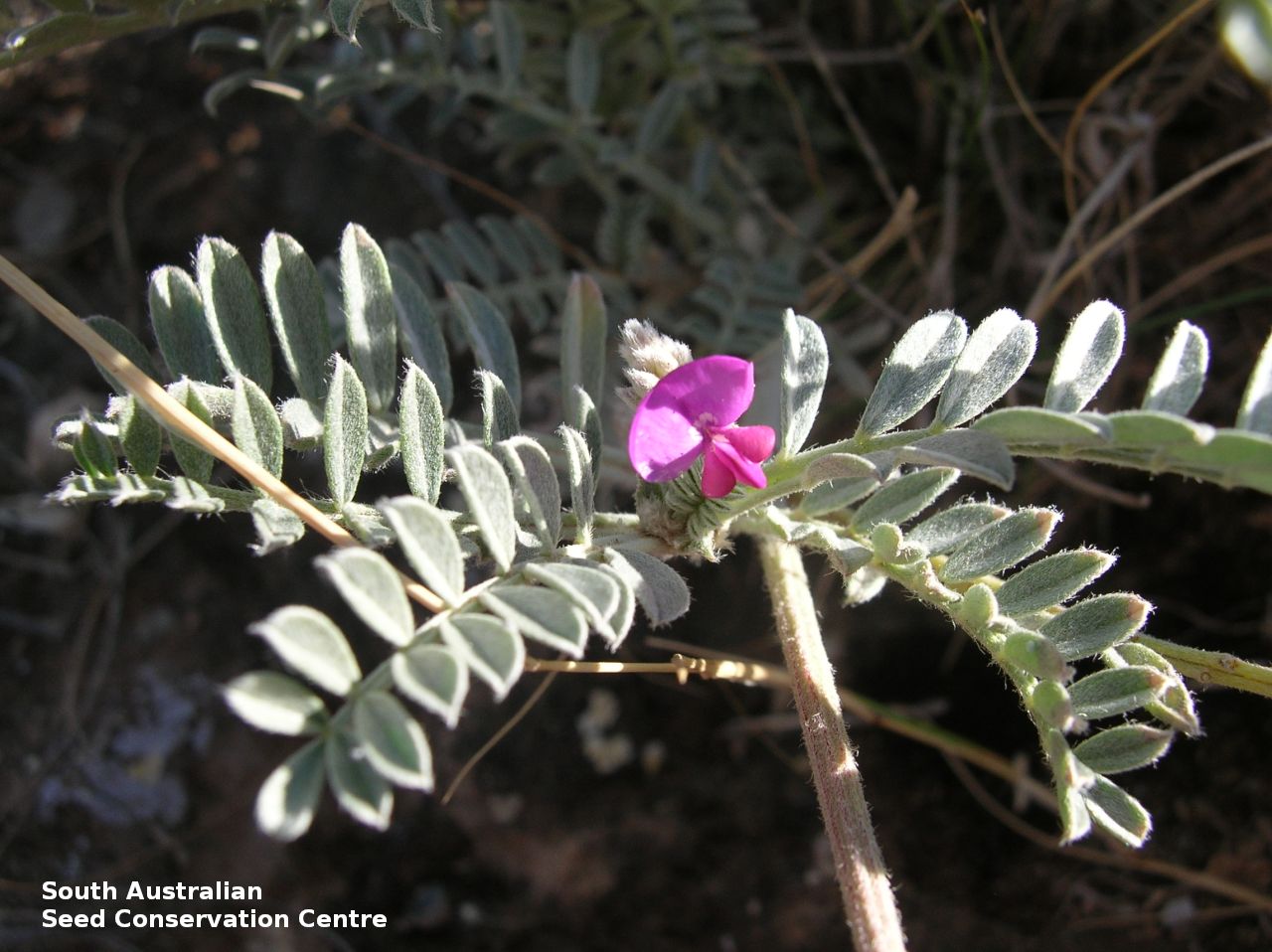
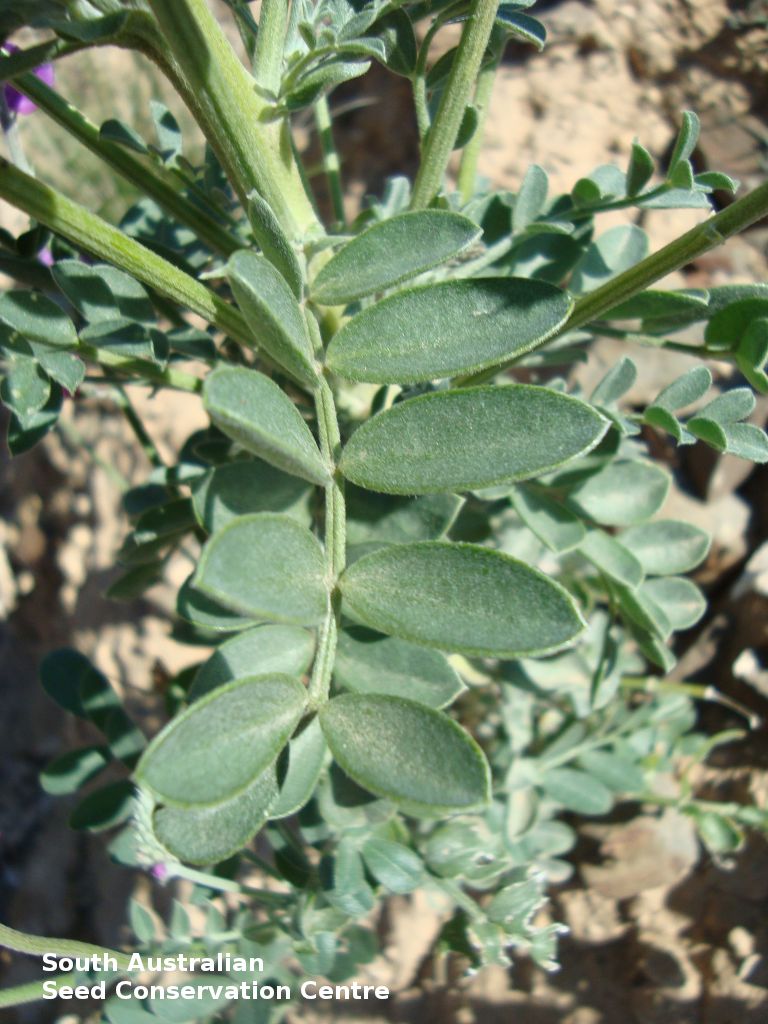
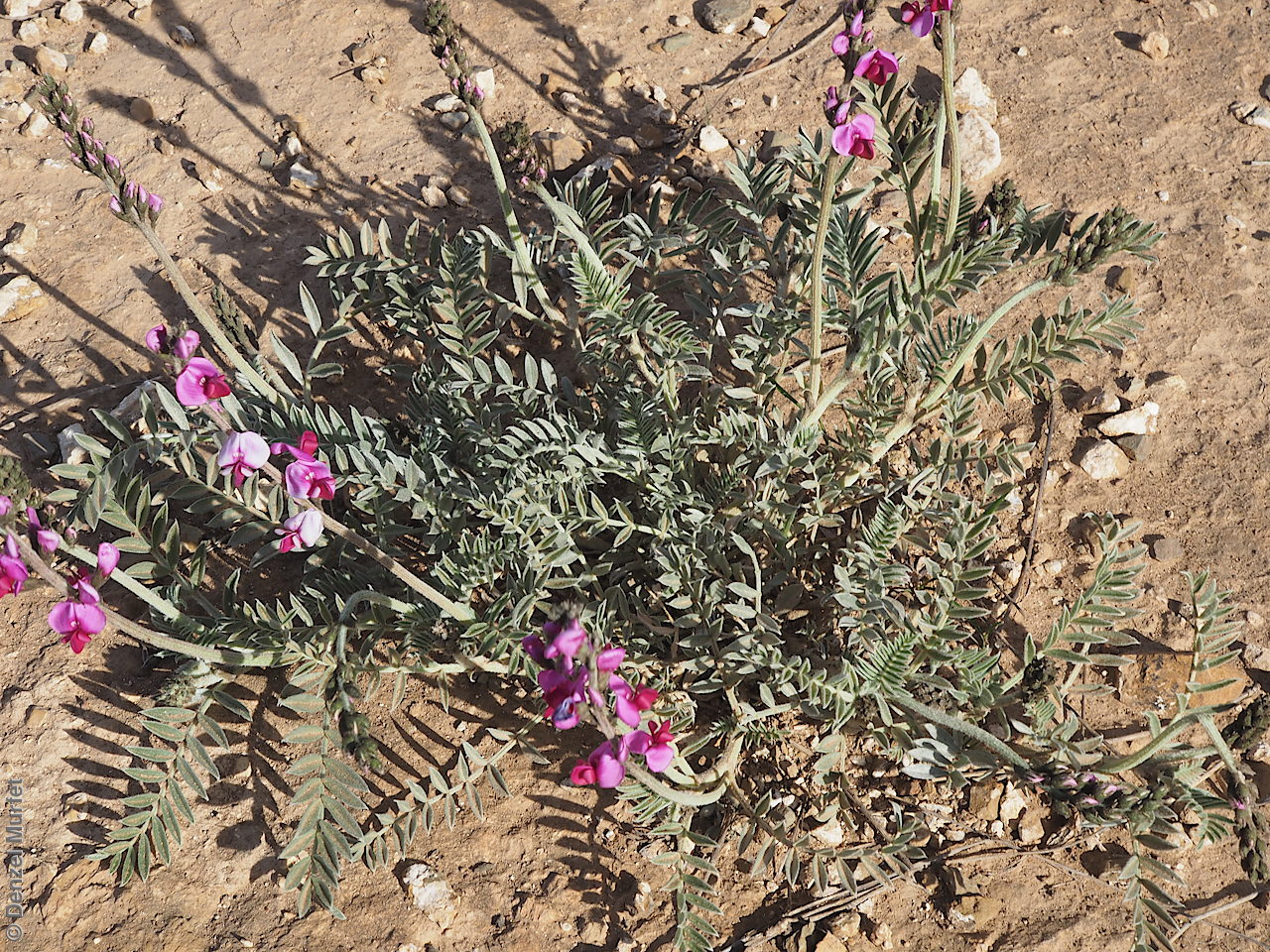
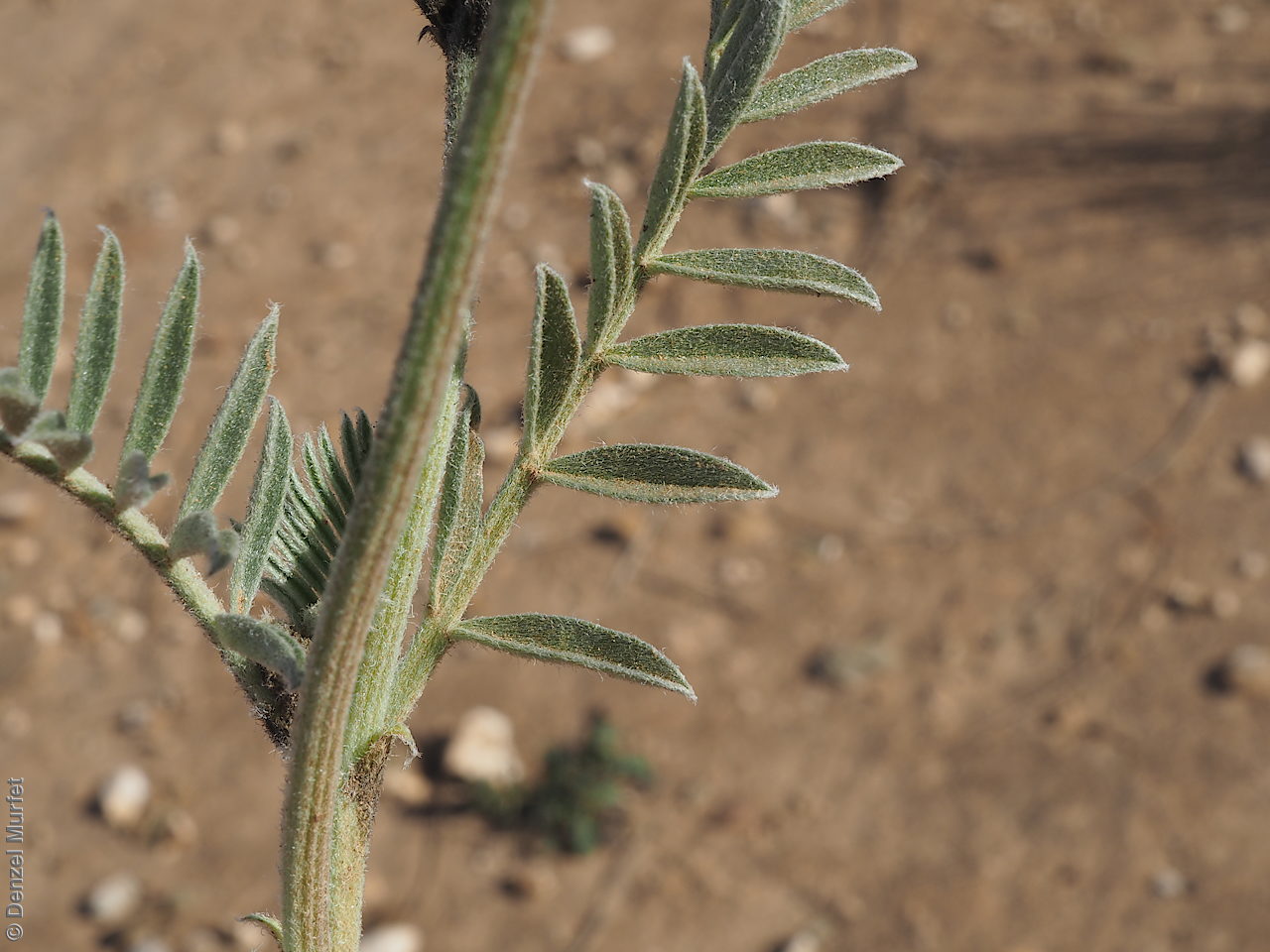
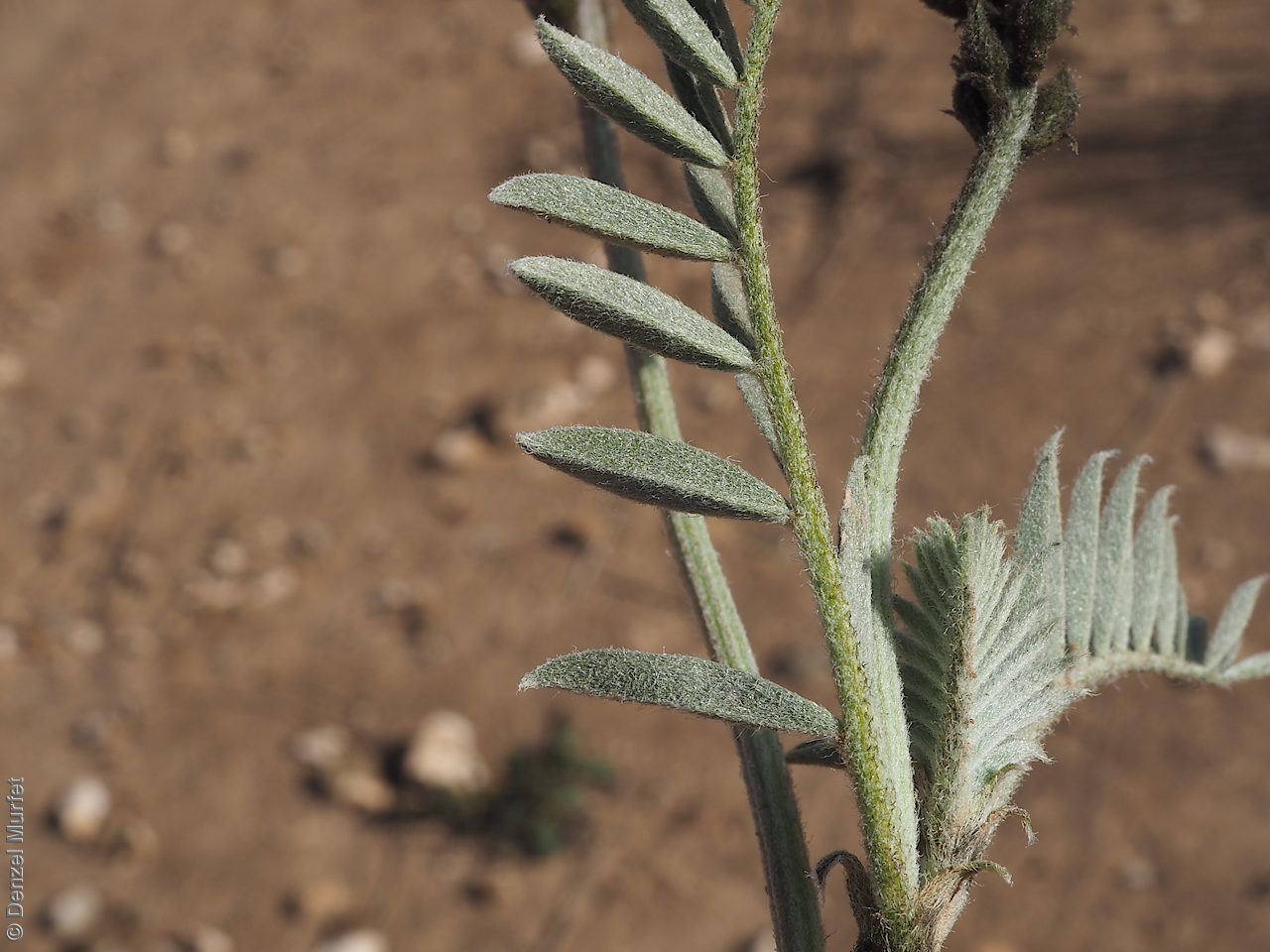
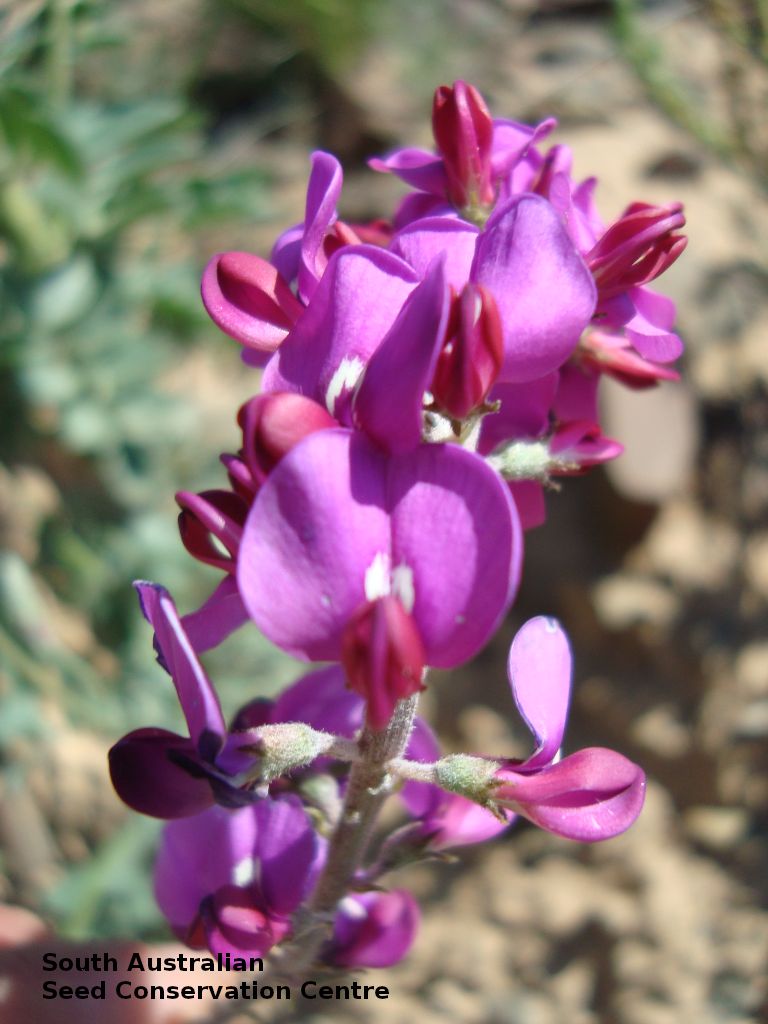
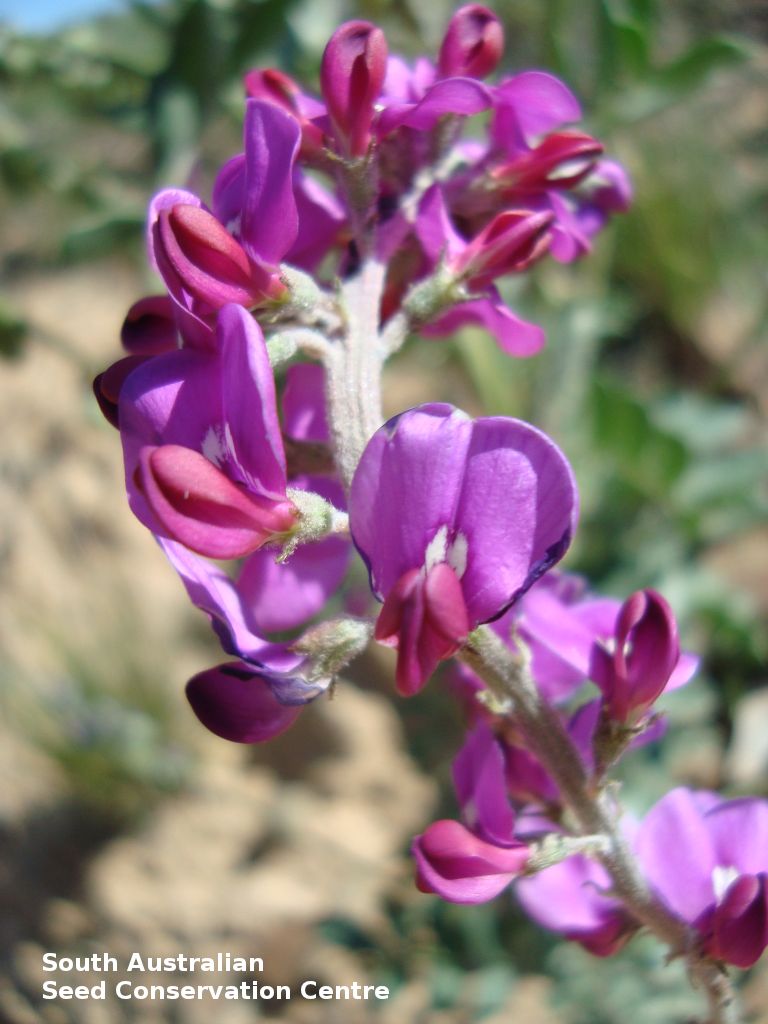
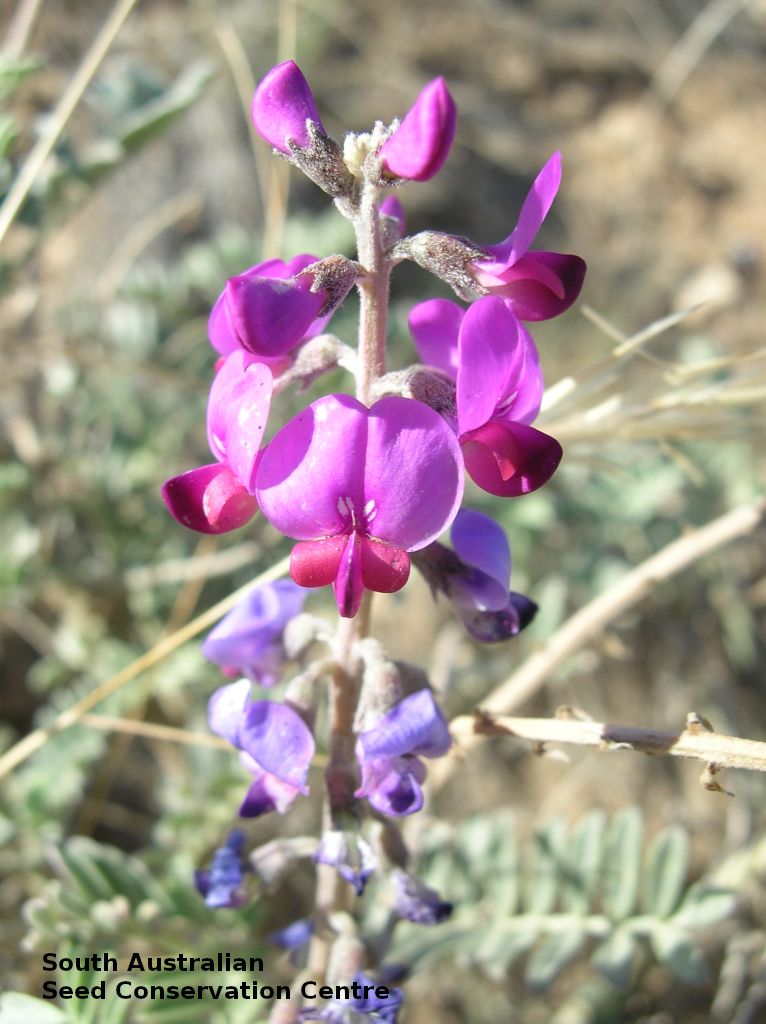
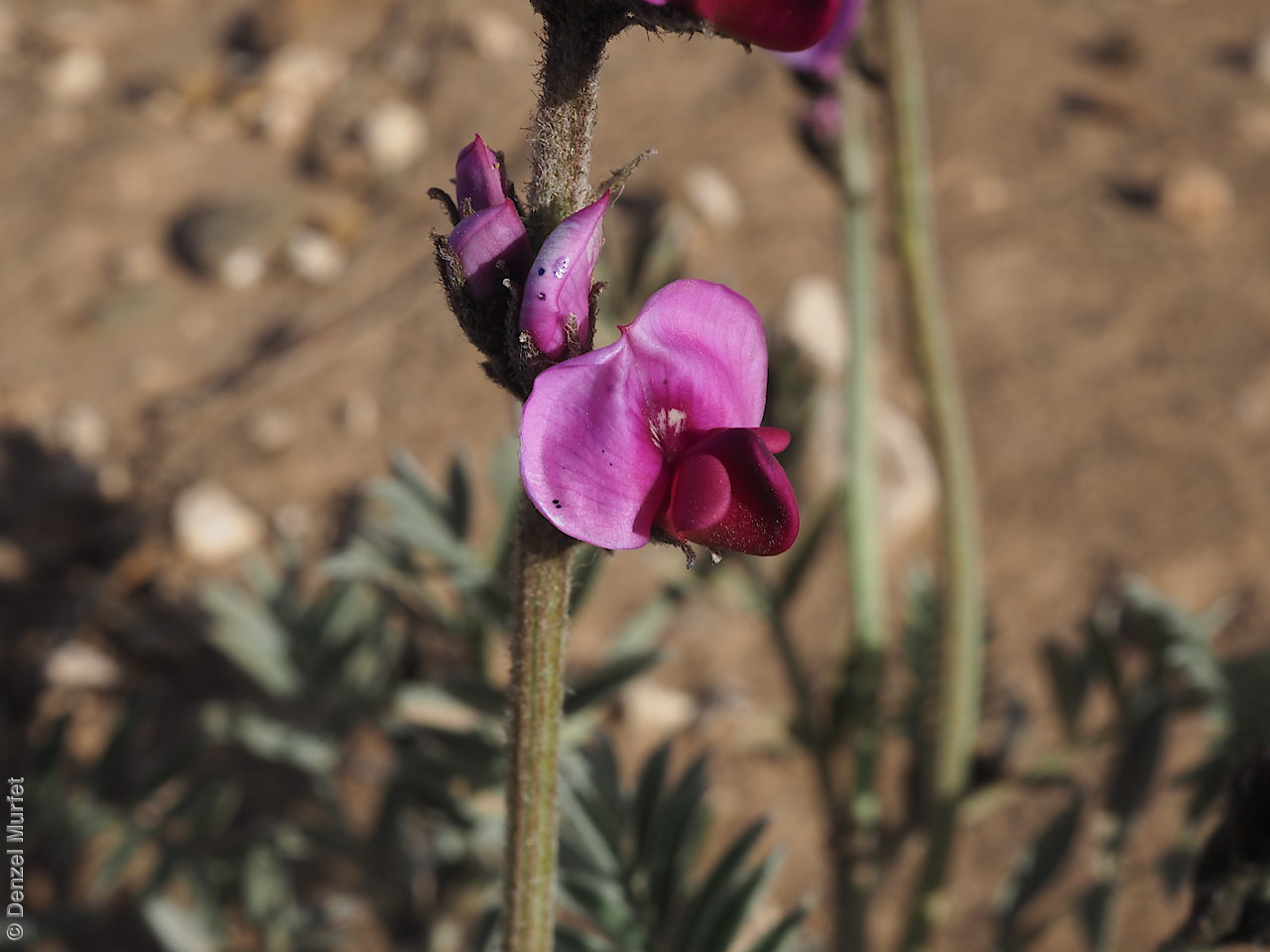
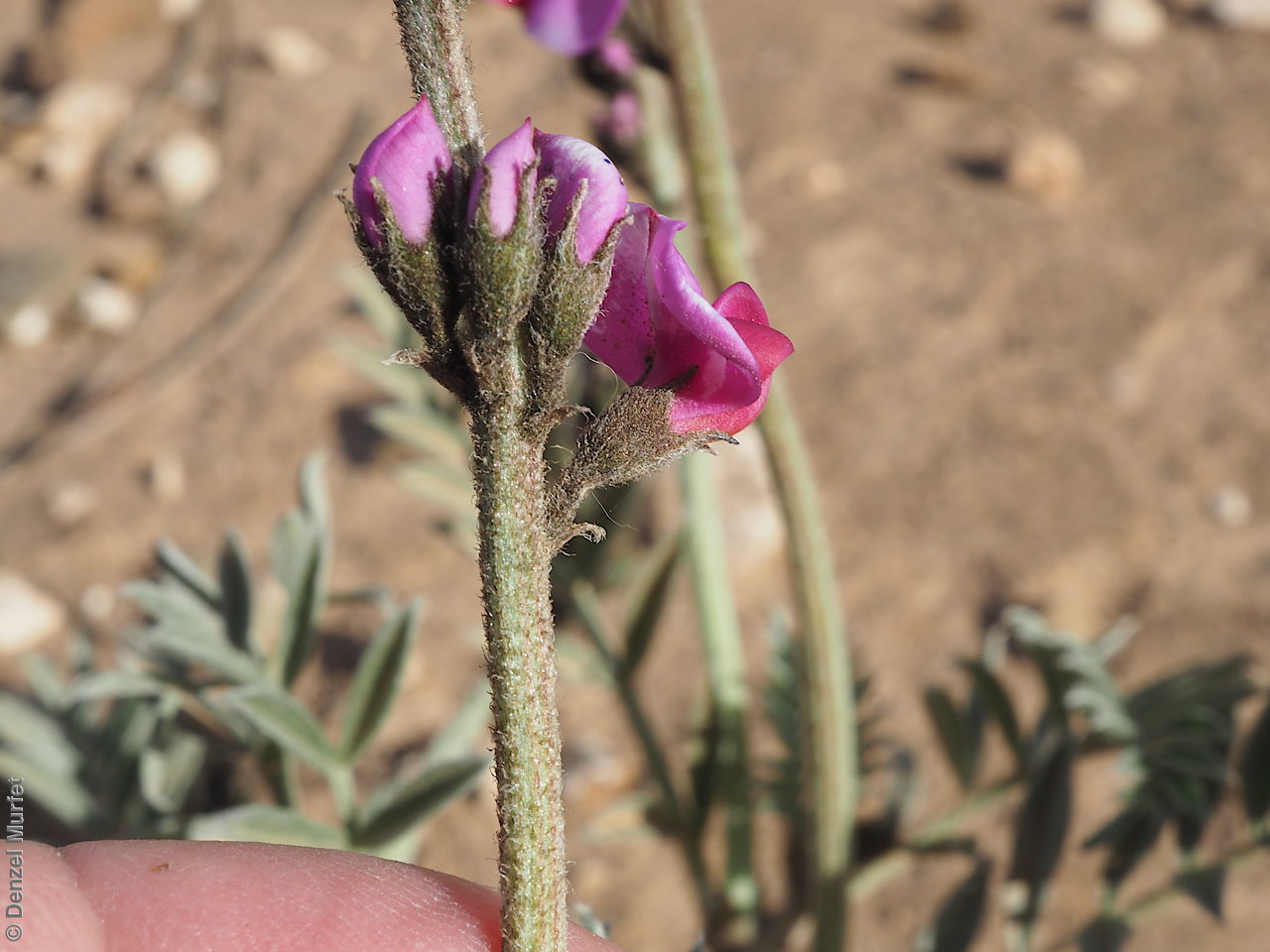
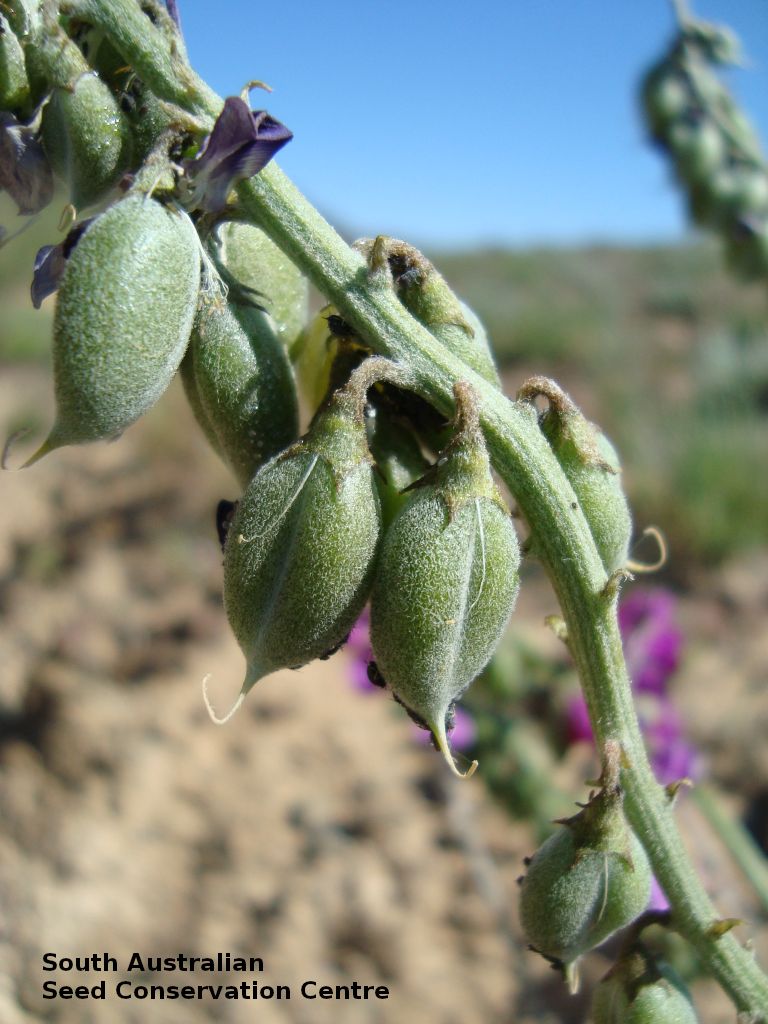
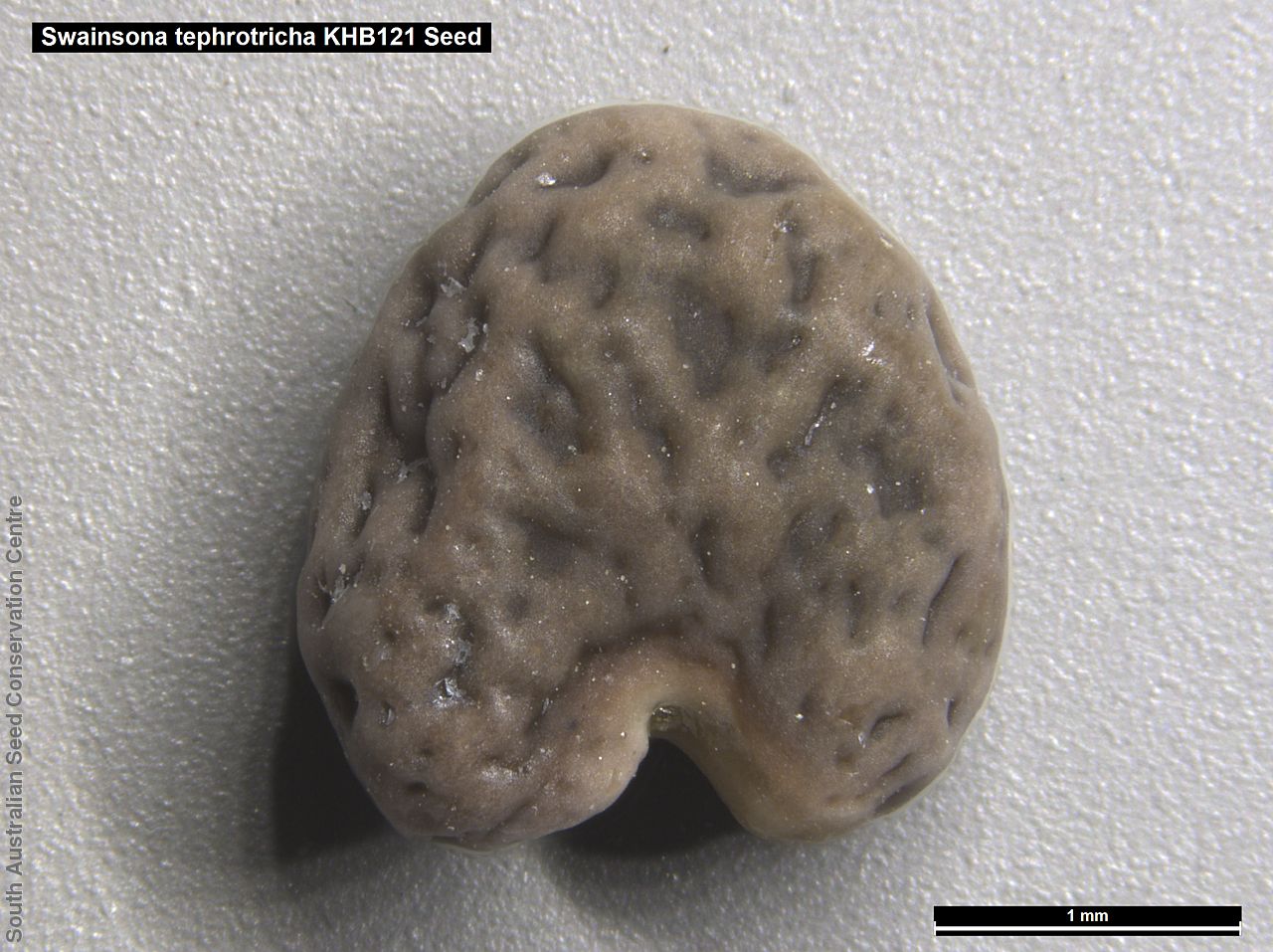
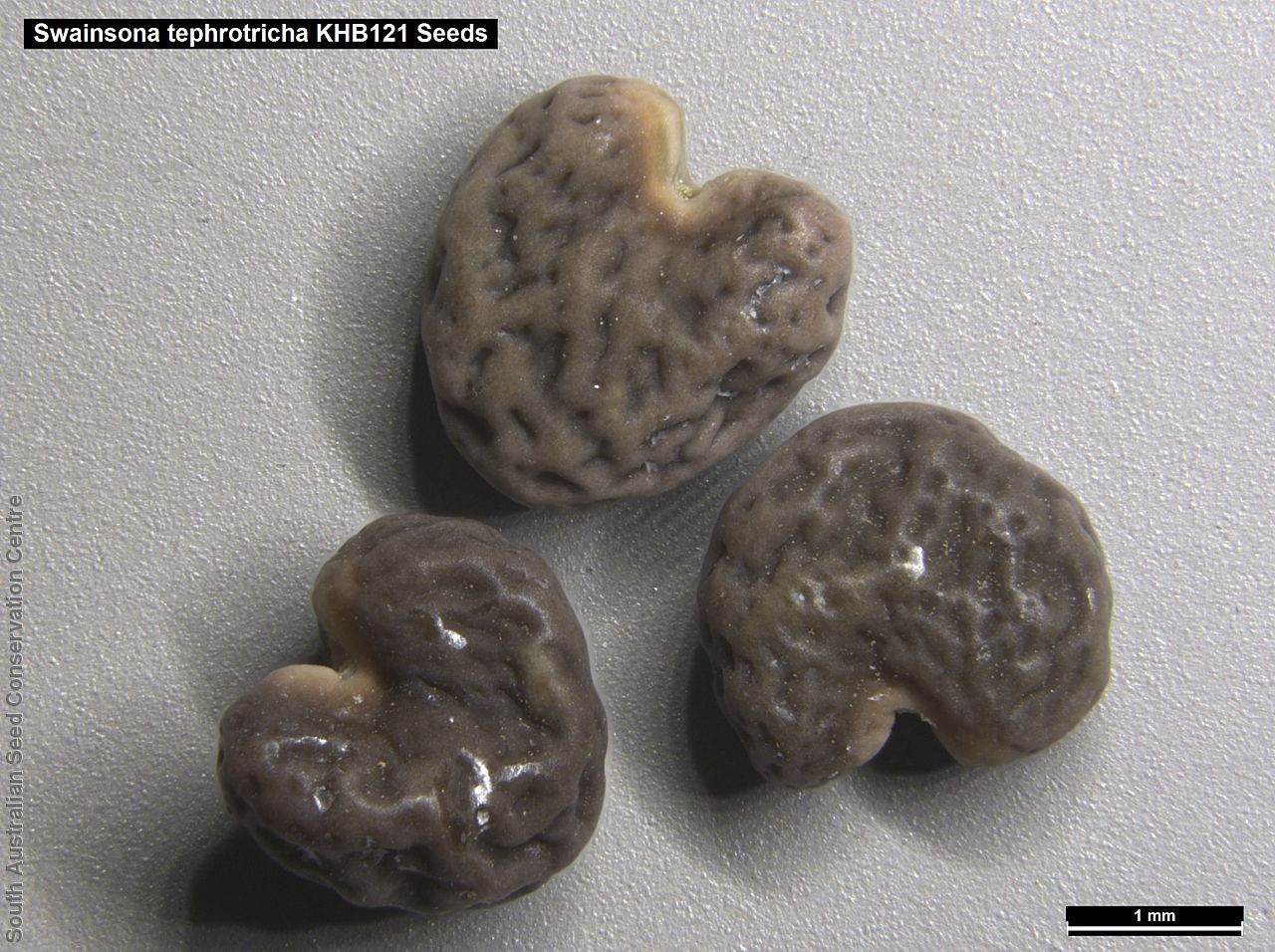
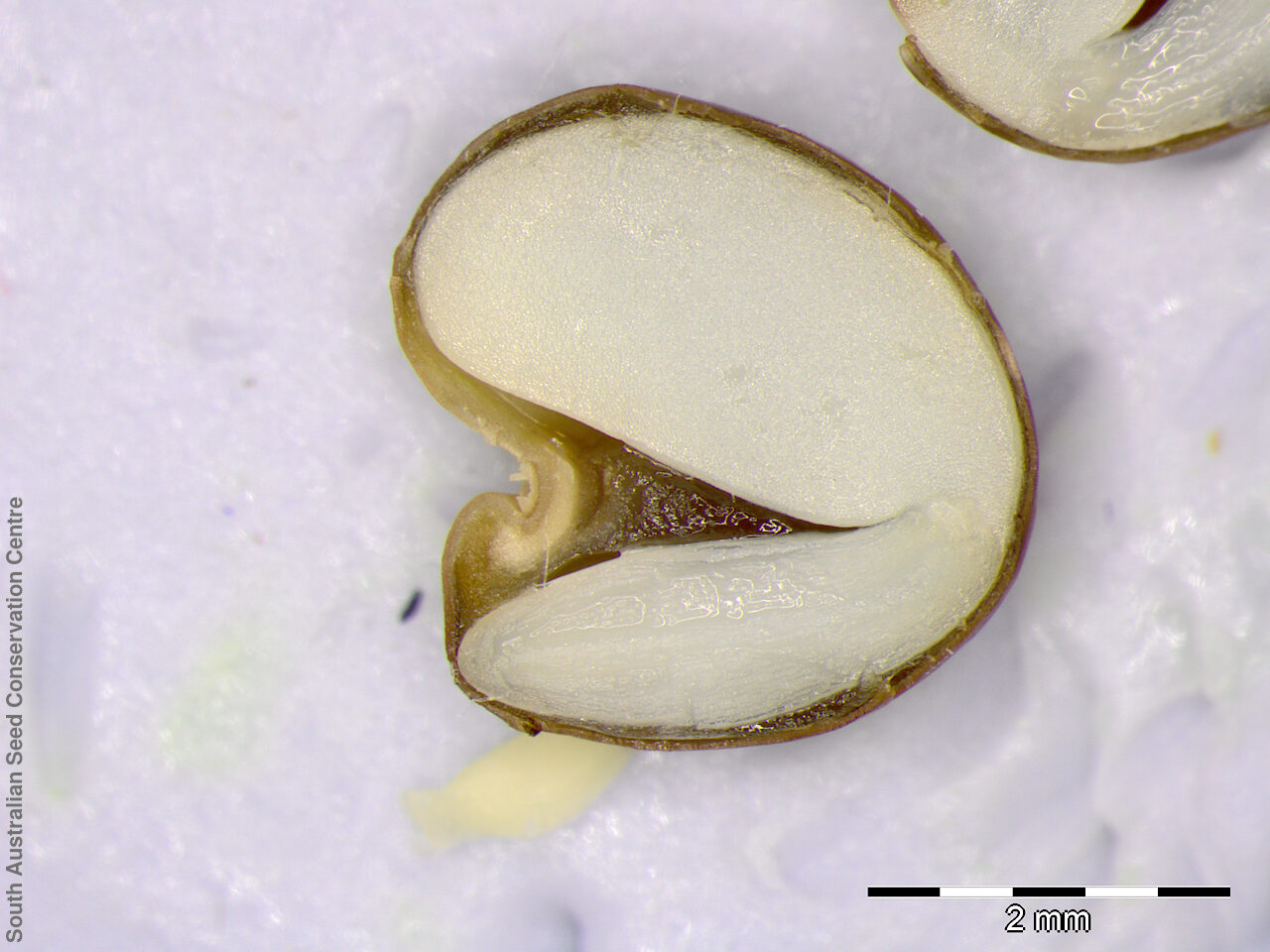
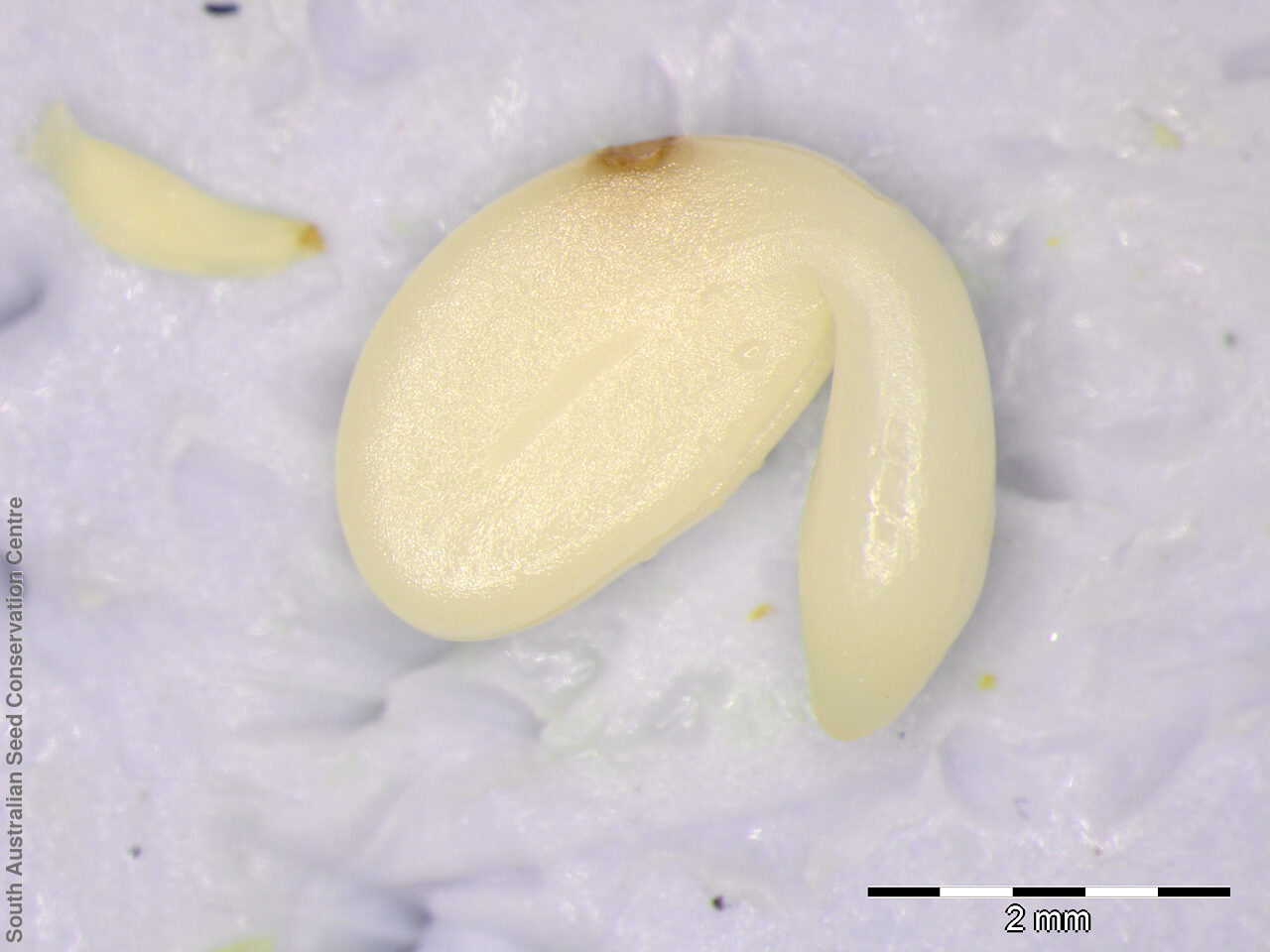
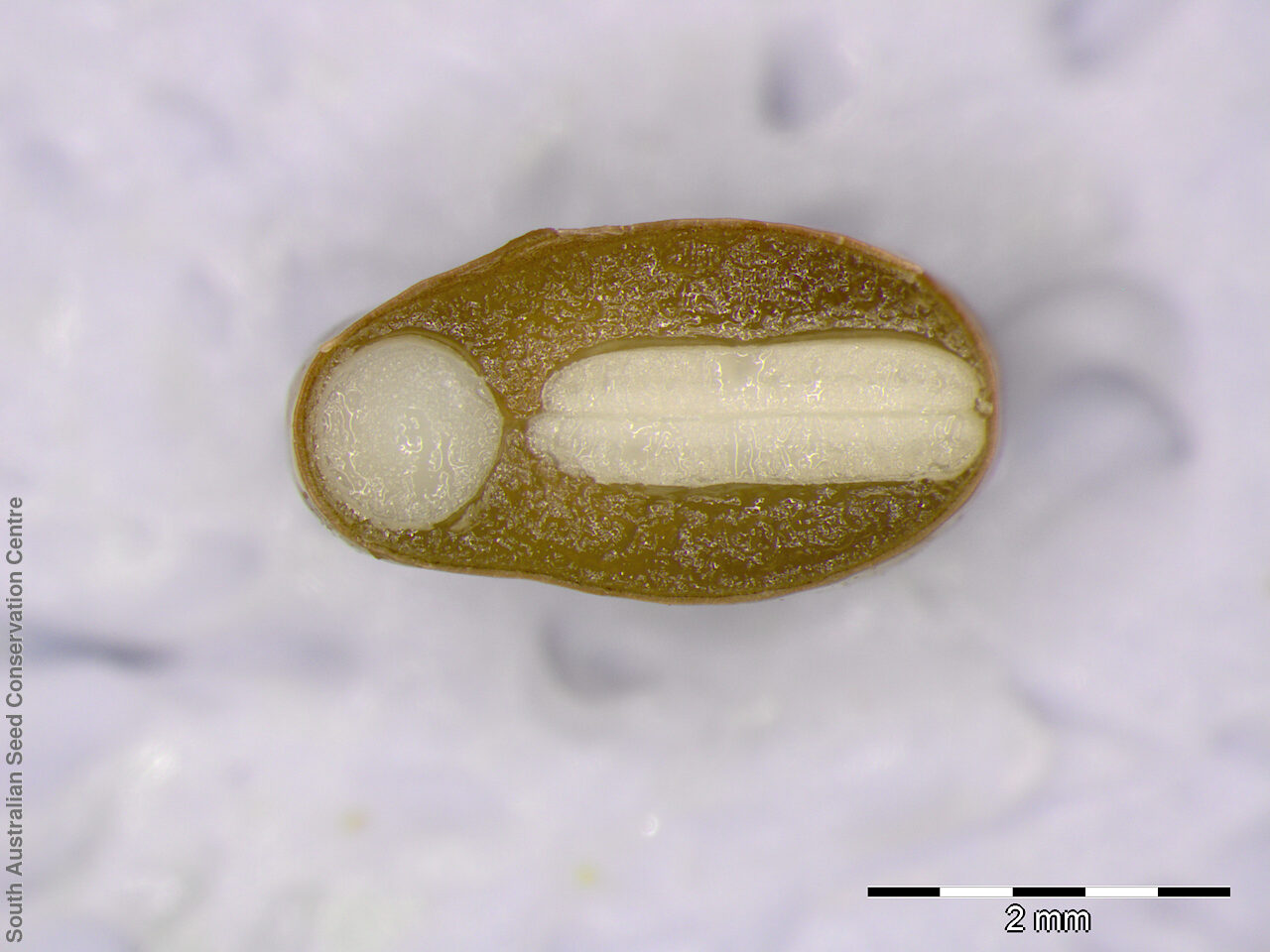

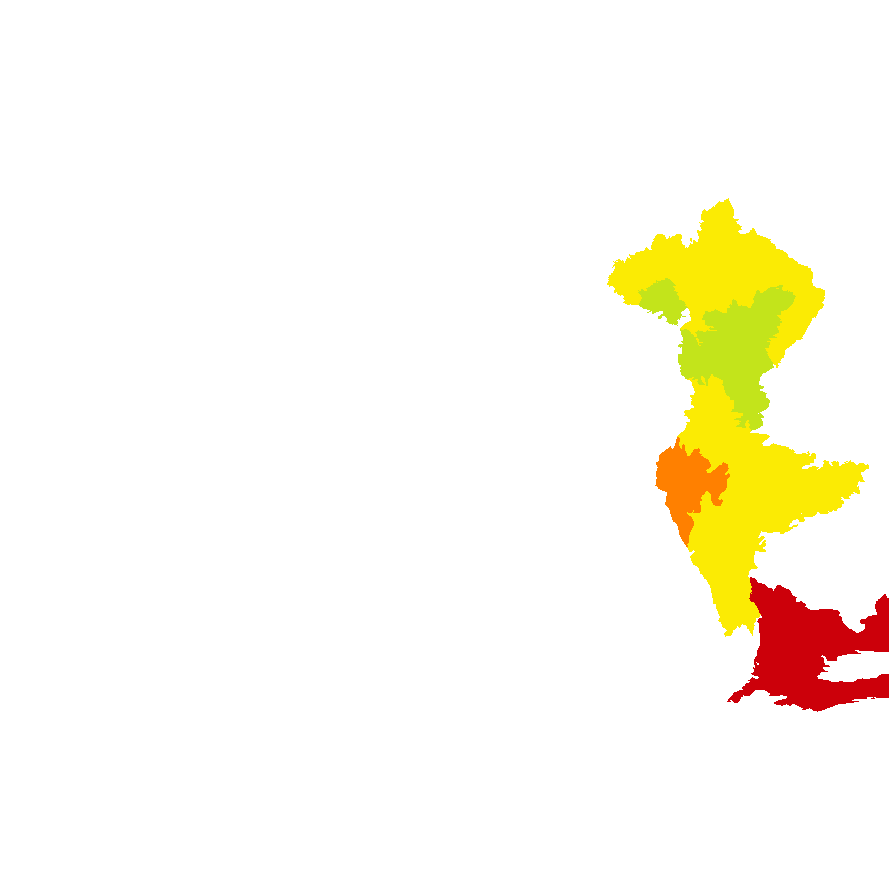
Botanical art
Prior names
Swainsona lessertiifolia var. tephrotricha, partly
Common names
Ashy-haired Swainson-pea
Ashy-haired Swainsona
Etymology
Swainsona named after Isaac Swainson (1746-1812), an English scientist and horticulturalist who had a private botanic garden near London. Tephrotriche from Greek 'tephros' meaning ash-coloured (grey) and 'trichos' meaning hairs; referring to the species grey appearance.
Distribution and status
Endemic to South Australia and found on arid hillsides in the Flinders Ranges area. Native. Uncommon in South Australia.
Herbarium regions: Lake Eyre, Flinders Ranges, Eastern, Northern Lofty, Murray
NRM regions: Northern and Yorke, South Australian Arid Lands, South Australian Murray-Darling Basin
AVH map: SA distribution map (external link)
Plant description
An erect or ascending perennial shrub to 1 m high with several dense hairy stems arising from a taproot. Leaves to 10 cm long with 7-19 dense hairy leaflets. Flowers numerous, pink or pinkish-purple on a long stalk. Flowering between July and October. Fruits are black ovoid pod to 15 mm long, covered in dense hairs and with a stiff texture. Seeds are brown, semi-flat reniform seed to 2 mm long with a wrinkled surface. Seed embryo type is bent.
Seed collection and propagation
Collect seeds between October and December. Collect mature pods, black with hard seeds inside. Mature pods can be found lying on the ground next to the plant containing hard seeds. When dried the pods can become hard and difficult to open. Use a rubber bung to rub the pods or break the pods open with your fingers to dislodge the seeds. Use a sieve to separate the unwanted material. Store the seeds with a desiccant such as dried silica beads or dry rice, in an air tight container in a cool and dry place. From three collections, the seed viability were high, ranging from 95% to 100%. This species has physical dormancy that needs to be overcome for the seed to germinate (e.g. nicking or softening the seed coat).
| Location | No. of seeds (weight grams) | Number of plants | Date collected | Collection number Collection location | Date stored | % Viability | Storage temperature |
|---|---|---|---|---|---|---|---|
| BGA MSB | 1,800 (8.8 g) 1,800 (8.8 g) | 20 | 28-Nov-2007 | KHB121 Flinders Ranges | 19-Sep-2008 | 95% | -18°C |
| BGA | 2,300 (10.13 g) | 17-Dec-2008 | KHB121 Flinders Ranges | 20-Jul-2009 | 100% | -18°C | |
| BGA | 21,700 (95.62 g) | 50+ | 23-Nov-2010 | KHB480 Flinders Ranges | 1-Jan-2012 | 90% | -18°C |
| BGA | 4,400 (11.63 g) | 23-Nov-2010 | KHB507 Northern Lofty | 1-Jan-2012 | 95% | -18°C | |
| BGA | 1,500 (6.69 g) | 3 | 15-Oct-2014 | Rob Brandle | 1-Jan-2016 | 100% | -18°C |
| BGA | 1,200 (2.94 g) | 15 | 30-Oct-2015 | JRG374 Northern Lofty | 1-Jan-2016 | 100% | -18°C |
| BGA | 1,400 (5.080 g) | 50 | 5-Dec-2022 | DJD4155 Flinders Ranges | 20-Jun-2023 | 70% | -18°C |
Number of plants: This is the number of plants from which the seeds were collected.
Collection location: The Herbarium of South Australia's region name.
% Viability: Percentage of filled healthy seeds determined by a cut test or x-ray.